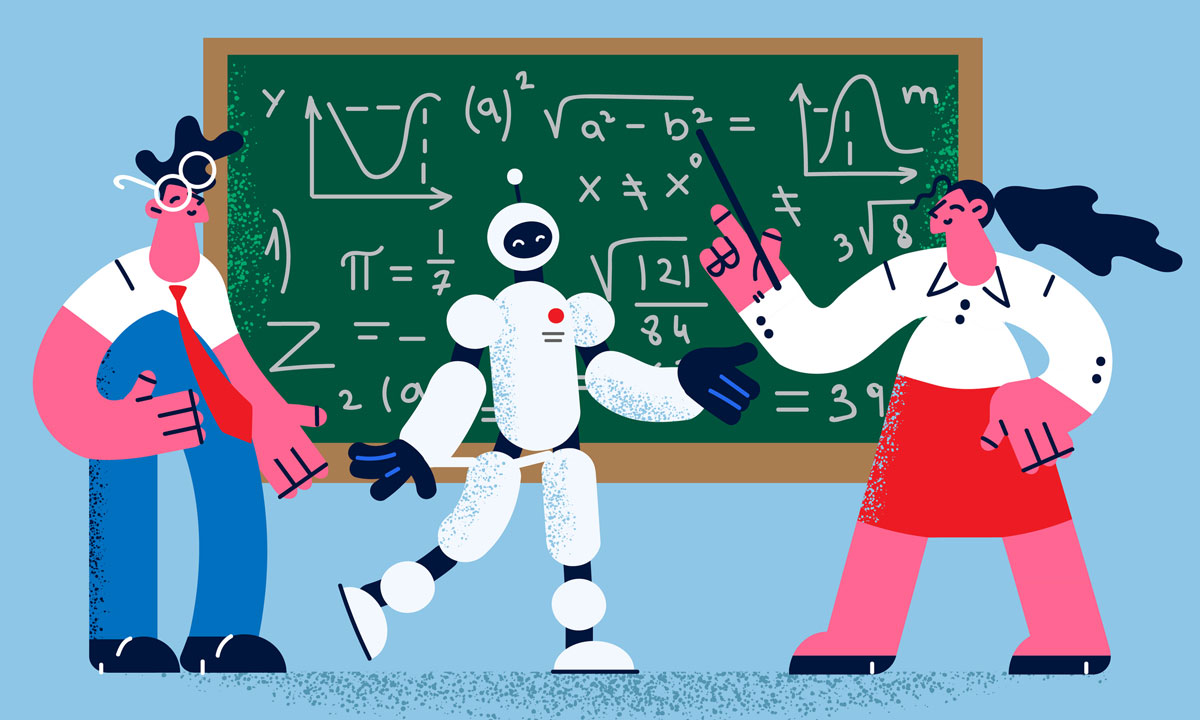AI Can Fine-Tune Teaching With Quicker, More Frequent & More Affordable Feedback
Educator's view: Programs show how artificial intelligence in the classroom can inform teacher practice in ways that can strengthen student engagement

Get stories like these delivered straight to your inbox. Sign up for The 74 Newsletter
It seems counterintuitive to think that artificial intelligence can help teachers reach children in the classroom more effectively. After all, what could be more distinctively human than lighting that flame of learning inside a child’s mind? And who better to coach a teacher on what works than another human? The short answer is no one. But the more nuanced response is that AI can inform teachers in ways that can strengthen the quality of their engagement with their students. We believe in its power and potential.
We lead education nonprofits that work closely with New York City public schools. Teaching Matters provides evidenced-based coaching to ensure that all students have equitable access to effective math and reading instruction. The Urban Assembly enables social and economic mobility by innovating in public schools with no admission requirements, including giving teachers the tools they need.
One of those tools is an AI-powered system that instructional coaches will soon use to analyze classroom videos and identify what teachers are doing well to connect with students and where they can improve. Coaches already analyze video, but this system, developed by American Institutes of Research, will speed up the process, allowing coaches to get meaningful feedback to teachers more quickly and more often in the Urban Assembly network’s 22 schools. Now, a teacher may get feedback as little as once or twice a year. AI will pump up the pace.
Teaching Matters piloted a similar system this school year, thanks to a grant from the Bill & Melinda Gates Foundation. This system, tried out in secondary math classes, listens to and analyzes the speech of teachers and students and can measure how often an educator uses certain practices that research has shown to work. For example, it can tell a teacher if a question was good and could help students think through a math problem themselves. Rather than using data to inform instruction by looking at student results, AI can quickly and cheaply collect information on select teacher practices that can lead to improved achievement.
In the past, this required a coach to sit and observe a teacher in the classroom. Now, with AI, schools can capture data on teacher practices more quickly and at lower cost. This is a game changer. In public education, time is both an important and limited resource; these AI systems save time by allowing instructional coaches and schools to see the methods that teachers are using in class more quickly. They provide data on these practices to the teachers, coaches and principals — and all of them can do something very human with it. They can use the data to discuss with one another which instructional practices are working. Collecting the data to support human interaction has now become affordable.
The ability of artificial intelligence to capture evidence of tone and mood can help foster a more supportive classroom environment and enable more effective social-emotional learning. AI can tell the difference between laughter and yelling, provide clues as to what leads to either and even help identify a negative mood that could hamper student learning and belonging.
It allows educators to find evidence of teaching moves that work, much in the same way that a basketball coach might draw up a game-winning play.
Still, it’s early days for AI. It’s not perfect. Because AI thus far has trained mostly on the voices of white men, it struggles with accents. It sometimes has trouble distinguishing between the voices of female teachers and students and thus offers incorrect feedback. These are problems that need work. If teachers and coaches are to trust the data, they are problems worth working on.
The potential dividends are enormous. We believe it will be easier to measure the quality of more complex types of teaching, and lower the cost of it to resource-strapped school districts. We believe it will energize teachers where it matters most — in the classroom.
And that’s the point, in the end. Students learn best from strong teachers. Not from programs, not from videos, not from AI. But if AI helps coaches to help teachers improve, that will be a gift given to students. Why withhold that?
Disclosure: The Bill & Melinda Gates Foundation provides financial support to The 74.
Get stories like these delivered straight to your inbox. Sign up for The 74 Newsletter

